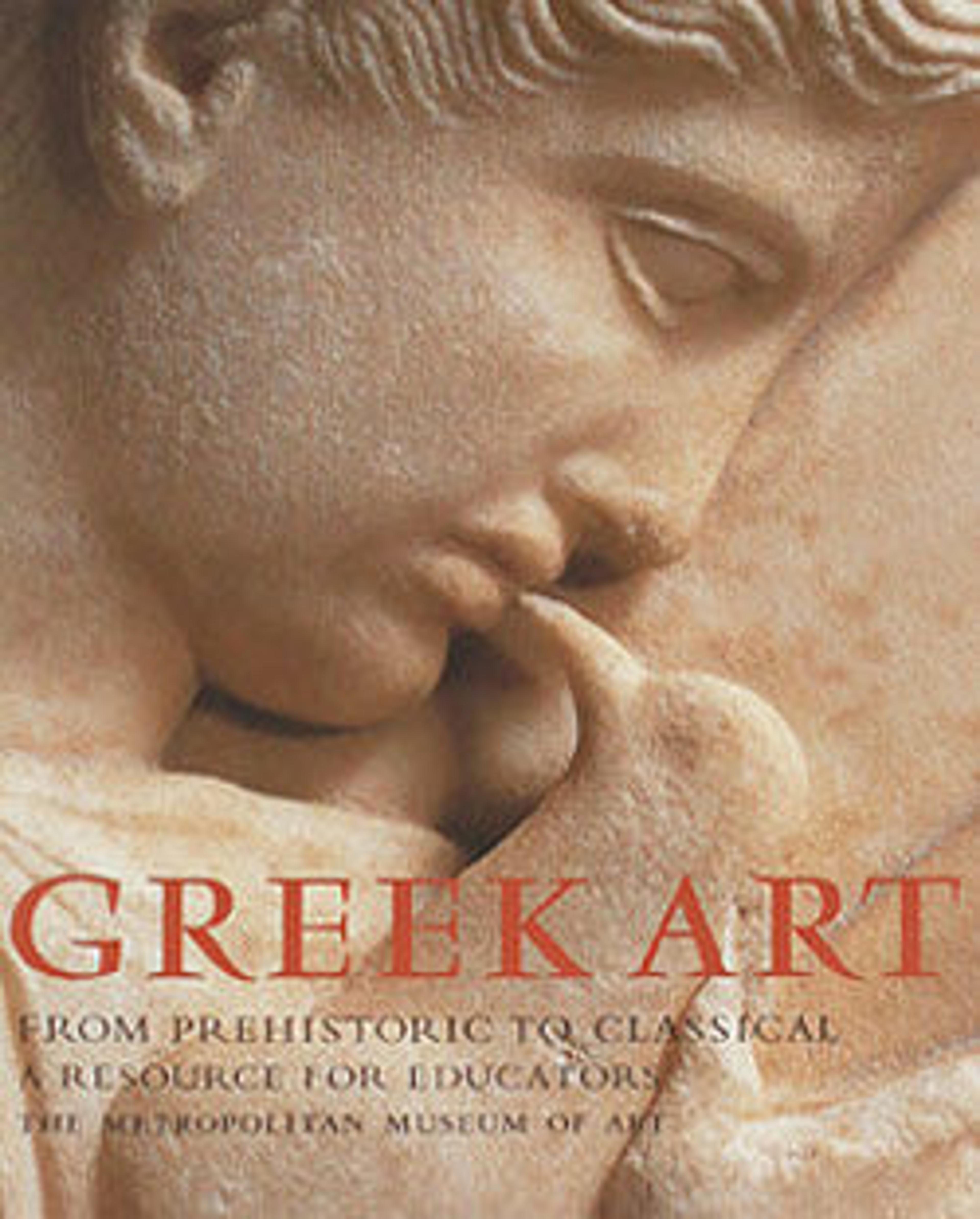Terracotta neck-amphora (jar)
Obverse, banqueting scene, possibly Dionysos and Ariadne
Reverse, Herakles and Acheloös
By the second quarter of the sixth century B.C., figural subjects and particularly mythological motifs predominated over animal friezes on Attic vases. The man-headed bull on the reverse identifies the scene as Herakles subduing the river-god Acheloös. The banquet on the obverse may depict the god of wine, Dionysos, with Ariadne, a daughter of King Minos of Crete. Dionysos married her after she was abandoned by the Athenian hero Theseus.
Reverse, Herakles and Acheloös
By the second quarter of the sixth century B.C., figural subjects and particularly mythological motifs predominated over animal friezes on Attic vases. The man-headed bull on the reverse identifies the scene as Herakles subduing the river-god Acheloös. The banquet on the obverse may depict the god of wine, Dionysos, with Ariadne, a daughter of King Minos of Crete. Dionysos married her after she was abandoned by the Athenian hero Theseus.
Artwork Details
- Title:Terracotta neck-amphora (jar)
- Artist:Attributed to the Ptoon Painter
- Period:Archaic
- Date:ca. 570–560 BCE
- Culture:Greek, Attic
- Medium:Terracotta; black-figure
- Dimensions:Overall: 14 3/4 x 10 3/8in. (37.4 x 26.3cm)
diameter of mouth 5 15/16in. (15cm) - Classification:Vases
- Credit Line:Gift of Eugene Holman, 1959
- Object Number:59.64
- Curatorial Department: Greek and Roman Art
More Artwork
Research Resources
The Met provides unparalleled resources for research and welcomes an international community of students and scholars. The Met's Open Access API is where creators and researchers can connect to the The Met collection. Open Access data and public domain images are available for unrestricted commercial and noncommercial use without permission or fee.
To request images under copyright and other restrictions, please use this Image Request form.
Feedback
We continue to research and examine historical and cultural context for objects in The Met collection. If you have comments or questions about this object record, please contact us using the form below. The Museum looks forward to receiving your comments.
